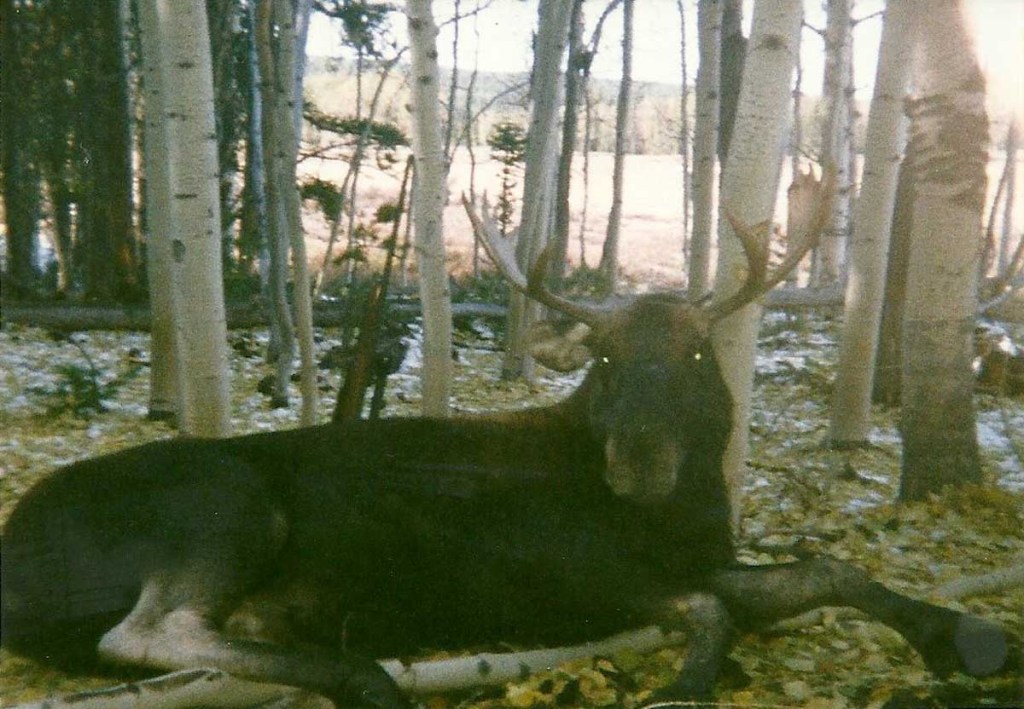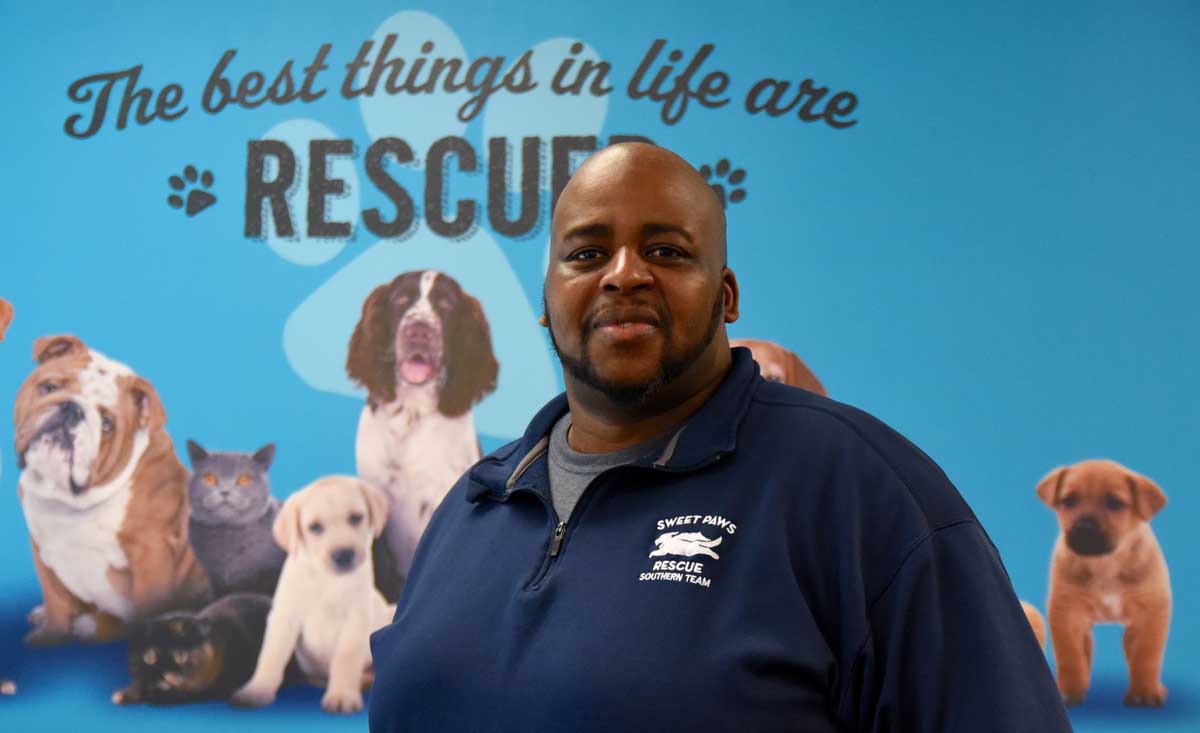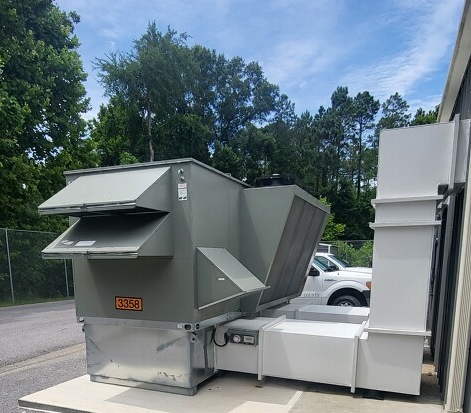One fine moose hunt
Published 5:00 am Friday, August 22, 2014

- The very dead bull moose looks as if he is bedded. But his antlers are wedged against a tree and the sapling he flattened can be seen beneath his body.
I crossed Cottonwood Creek in the tiny part of Utah’s Wasatch National Forest that happened to spill over into the southwest tip of Wyoming some 40 miles south of Fort Bridger, the fort built by Jim Bridger and Louis Vasquez in 1843 as a trading post for travelers of the Oregon Trail. Typical of western mountain streams, the water was clear and swift but quite shallow, easy to cross with my four wheeler. Cottonwood raced quickly south into Utah 60 miles west of Dutch John.
I was headed for a snow packed slope higher up where a local cowboy and I had found moose tracks larger than a coffee cup saucer a couple days back. The tracks were on a trail descending onto a giant basin of willows, the preferred food for the Shiras moose. A four inch snow revealed the tracks.
Trending
Reaching the trail, I eased the ATV back a bit, walked across the trail to a good vantage point, brushed away snow and sat down, leaning against one of the thousands of dormant aspen trees that covered the transition zone between the huge willow feeding area and the dark timber higher up the mountain.
I had barely squirmed into shooting position when I heard loud, trampling footfalls coming down the trail from above, sounding much like a runaway horse; a big one! Fate brought the .280 Ruger to my right shoulder (I shoot from either shoulder but unhurried I prefer my left) because it was available first. This made it quicker to work the right handed bolt. This must have been important because I put three 160 grain Speer Grand Slams into that bull moose’s lungs in a span of 20 yards.The moose showed no sign of taking this dose as he lumbered downhill, still kicking over softball size boulders underfoot. Then I saw a young 25 foot aspen pop over like a toothpick. I took 30 steps and saw the bull apparently resting as if in his daybed, head and antlers up in a normal lying position. I raised the .280 and put one through his neck. Not a shudder. The bull had run headlong into the little aspen, dead on his feet, and flopped straight down with his antlers hung tightly against an aspen. The dead moose never felt my unnecessary finishing shot.
Why was the bull running? Must have smelled the light breeze that was blowing my scent up the trail and decided to come and kill me. Don’t know, but why else would a lone bull be charging like that?
My moose was about 70 percent grown, weighing maybe 750 or 800 pounds. I never hesitated on the shot because I had gotten news that my son’s house in Texas had burned during the night and he had barely escaped by breaking a window and was now in a hospital suffering from smoke inhalation. I vowed to take the first legal bull I saw so I could pack up and head home to check on him.
I got a small portion of the meat and the head and antlers out that evening. The kill was 10 miles from the nearest paved road and a mile or so from my parked truck on a remote trail. That night I told the cowboy where I had made the kill and he remembered the spot. I asked him to come check on me if I wasn’t back the following day by sundown.
I took saws, axes, knives, large tarps, canvas bags, a hand winch and plenty of rope back to the site at sunup. After evisceration, I skinned one side and then rolled the animal over onto it’s skin with the winch and skinned the other side. Sawing some meat into pieces and boning out some took the rest of that day. With several trips back across Cottonwood Creek to the truck, I had everything out but the two hind quarters. Even with the back loins and legs removed from the hind “hams,” I could not lift either one of them. Just as it was getting dark, 32 hours after the kill, I was planning to rig a winch to lift them when the cowboy arrived on his ATV. Together we loaded the two giant quarters and made it off the mountain in the dark.
Trending
The snow had kept the meat plenty cool all through the day as it lay on clean tarps. The meat was the finest tasting of any large wild animal meat I ever tasted. A hind quarter lasted the cowboy and his new wife all winter and my family and friends ate on my part for several years.
Many hunters would wince at the thought of what they consider excessive work to get that animal out. For me it was one of many challenges I have had in like experiences with elk and other game; challenges I actually enjoy. Yes, the challenge is similar to hunting in sub-zero weather or hiking 10 miles at 12,000 feet elevation to score on game. It is testing myself to see if I can do it, and when I do, the satisfaction is immeasurable.
I know a man, then young and strong, who turned down a shot at a 6 X 6 bull elk because “he was far off down the mountain where it would be hard to retrieve him.” I would have taken that bull in a heartbeat and spent the next two very happy days packing him out. Crazy maybe. But that is just me.





